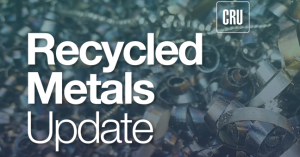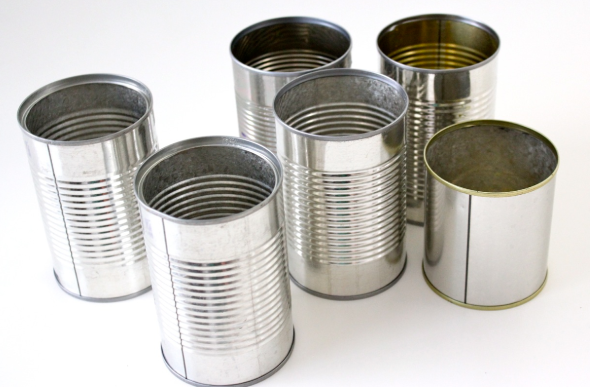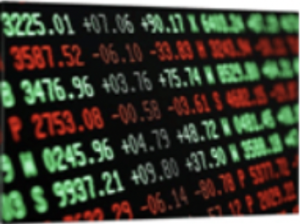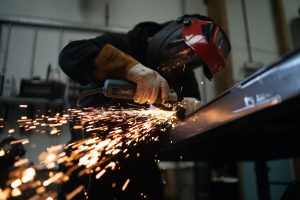
Questioning long-held scrap price ‘realities’
Does the price of ferrous scrap depend on the price of finished steel product? And how much of an influence do billet and slab prices have on scrap prices?

Does the price of ferrous scrap depend on the price of finished steel product? And how much of an influence do billet and slab prices have on scrap prices?

As the ISRI 2024 conference unfolds in Las Vegas, attendees are diving into crucial discussions shaping the future of the recycling industry. Here are the main topics being discussed: New steelmaking capacity coming online this year Export demand during this period Infrastructure spending Supply of pig iron and HBI Current logistics challenges May scrap prices […]
Last week was a newsy one for the US sheet market. Nucor’s announcement that it would publish a weekly HR spot price was the talk of the town – whether that was in chatter among colleagues, at the Boy Scouts of America Metals Industry dinner, or in SMU’s latest market survey. Some think that it could Nucor's spot HR price could bring stability to notoriously volatile US sheet prices, according to SMU's latest steel market survey. Others think it’s too early to gauge its impact. And still others said they were leery of any attempt by producers to control prices.

Drilling activity decreased in the US but rose in Canada in the week ended April 12, according to the latest data from Baker Hughes.

Total domestic aluminum mill products orders in March were up 0.2% compared to March 2023, according to the latest “Index of Net New Orders of Aluminum Mill Products” released by the US Aluminum Association (AA). This is much lower than the growth of 9.3% year over year (y/y) reported in February.

SMU’s Steel Buyers’ Sentiment Indices both rose this week.

The market appears to be taking a pause after the heavy buying that occurred in March.

Steel buyers said mills are more willing to talk price on spot orders on all the products SMU covers, according to our most recent survey data.

Steel prices continued to ease lower in early March – a trend seen since mid-January – before showing signs of bottoming and inflecting up. The SMU Price Momentum Indicator for sheet products shifted from lower to neutral mid-way through the month after Nucor, Cleveland-Cliffs, and ArcelorMittal all targeted new base minimums between $825-840 per short […]

The United Steelworkers (USW) union is calling out Nippon Steel for already prioritizing its Japanese operations at the expense of American workers despite forging ahead with its proposed plan to purchase U.S. Steel.

Over the last several years, I have noticed widening spreads between #1 Heavy Melting Steel (ISRI 201) and Shredded (ISRI 210,211), as well as Plate & Structural (ISRI 232).

Nucor made waves in the sheet market when it announced on Friday that it would begin publishing a weekly hot-rolled (HR) coil price. The Charlotte, N.C.-based steelmaker arguably made even bigger waves on Monday when it posted its first weekly HR number: $830 per short ton. That’s $70/st lower than the $900/st HR price Cliffs announced in late March. It’s also lower than prices in the mid-$800s that other mills were (less publicly) seeking.

Sheet prices saw a slight momentum shift this week after consecutive gains in the prior two weeks. Plate edged lower on greater competition off easing demand, according to our latest check of the steel market.

Cleveland-Cliffs and the Global Steel Climate Council (GSCC) are two of the newest members to join the World Steel Association (worldsteel).

Global steel demand will reach roughly 1.793 million metric tons (1.976 million short tons) this year, an increase of 1.7% over 2023, the World Steel Association (worldsteel) said in its updated Short Range Outlook report. The gain will come after a 0.5% contraction in steel demand in 2023. Demand is forecasted to increase another 1.2% […]

Nucor said its new weekly hot-rolled coil spot price is not meant as a substitute for any current price indices.

Personal Consumption Expenditures (PCE) inflation data was released on Friday, March 29, despite the stock market being closed for Good Friday. The year-over-year (y/y) PCE price index rose 2.5% in February, in line with market expectations but up from the 2.4% growth seen in January. The core PCE index, which excludes food and energy prices, rose 2.8% y/y in February, also in line with expectations and slightly down from 2.9% in January.

The number of active rigs in the US eased to a nine-week low, while Canadian activity continued it’s seasonal wind down.

April scrap prices came in sideways in the US, sources told SMU.

Sheet prices continue to inch higher. That’s a welcome development for many. But it’s also a far cry from the price surge many predicted about a month ago. Remember the theory that supported a spring surge: Sheet prices would soar on a combination of mill outages, stable-to-strong demand, restocking, mill price increases, and (potentially) trade action against Mexico as well.

It has been six weeks since Flack Global Metals wrote our last SMU column, and if you simply look at the futures curve from then (blue) until now (white), you could argue that very little has changed.

Low manufacturing activity and higher interest rates took a toll on Radius Recycling’s profits during the Oregon-based company’s most recent quarter. Radius reported a net loss of $34 million, or $1.19 per share, during its fiscal second quarter. In the previous quarter, Radius saw a net loss of $18 million, or 64 cents per share.

The US Department of Energy has finalized Congressionally mandated energy-efficiency standards for transformers.

On Monday and Tuesday of this week, SMU polled steel buyers on an array of topics, ranging from market prices, demand, and inventories to imports and evolving market chatter.

You might have noticed that SMU has been publishing more articles about scrap in recent months. That was no accident. In fact, we’ve found enough of an audience that CRU, our parent company, has decided to launch a new publication – Recycled Metals Update, or RMU. It cover both ferrous and nonferrous scrap. RMU’s website is here. You can go there now and request a 30-day free trial. It’s that simple.

US construction spending in February was mostly steady from January but showed significant gains from last year.

Following 16 months of contraction, US manufacturing activity expanded in March according to the latest report from the Institute for Supply Management (ISM).

There is growing hope that the US scrap market has bottomed, according to industry sources. The steep price declines in March may have ushered in a floor because dealers say their stocks are a bit depleted. Their concern: that the flow of obsoletes could be cut severely with any further drop in prices. Is this wishful thinking, or do the fundamentals support the prediction of a market bottom? Let’s take a look!

SMU latest' steel market survey paints the picture of sheet market that has hit bottom and begun to rebound. Lead times are extending again after stabilizing earlier this month. Mills are far less willing to negotiate lower sheet prices - even if there are still deals to be had on plate, according to the steel buyers we canvassed.

After stabilizing in our last check of the market, production times for flat-rolled steel have begun to push out further, according to steel buyers responding to SMU's market survey this week.